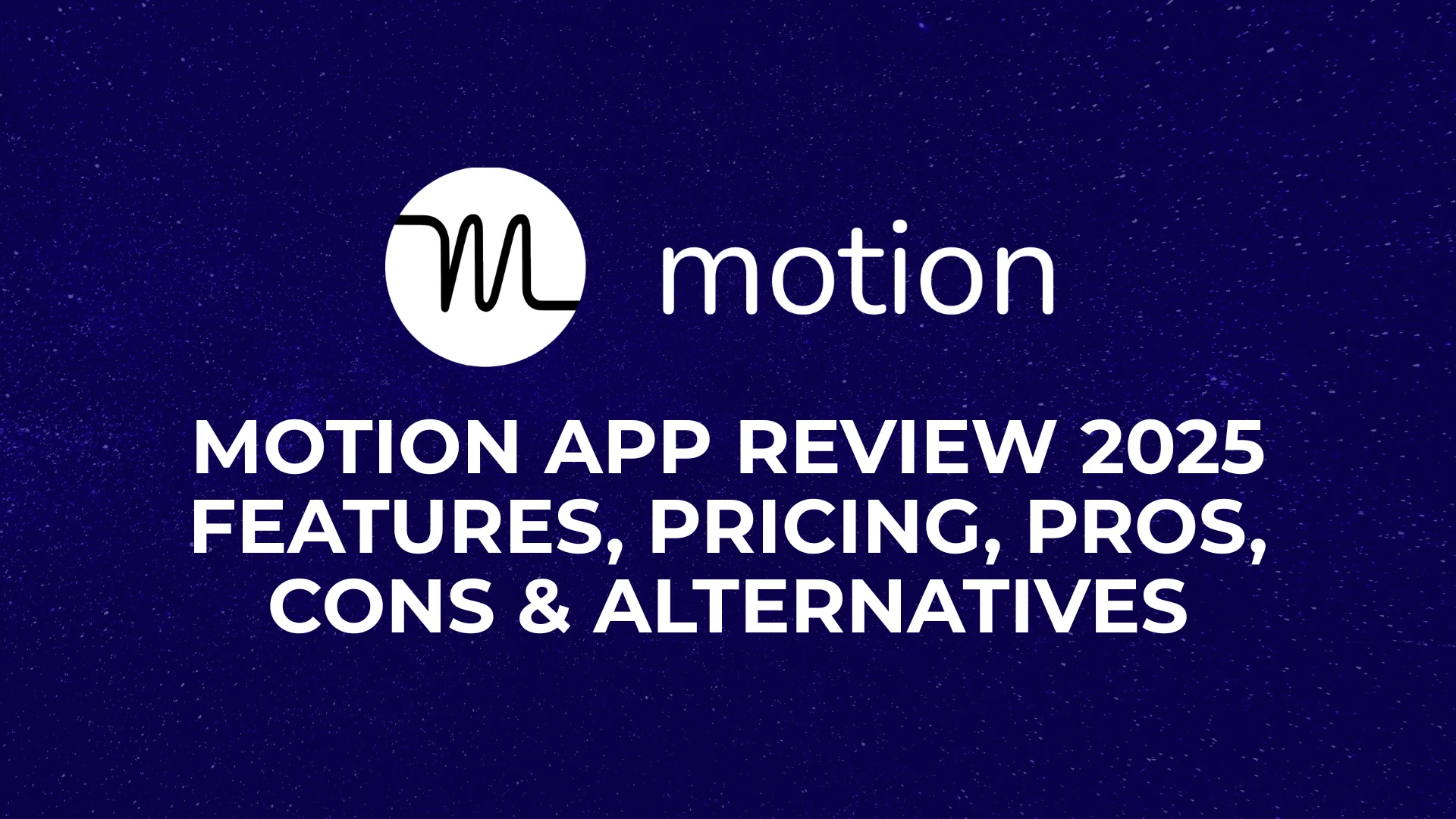If you have ever been stuck debugging a failed CI/CD pipeline at 2 AM or chasing down why your Kubernetes pods keep crashing, you will know this, DevOps is hard.
It’s not just about writing scripts and automating deployments. It’s about making sure complex systems run smoothly, securely, and without eating up the entire engineering team’s sanity.
This is where AI tools for DevOps step in. They don’t replace engineers, but they do handle the repetitive, error-prone, and time-consuming parts of the job, spotting anomalies, suggesting fixes, predicting outages, and even auto-healing infrastructure.
What this really means is you can spend less time firefighting and more time building.
In this guide, I’ll walk you through the 9 best AI DevOps tools for 2025, what they actually do, how they work in practice, and the kinds of real problems they solve.
By the end, you’ll have a clear sense of which tools might fit into your workflow today.
How AI Is Changing DevOps
Before diving into the tools, let’s quickly ground ourselves in how AI fits into DevOps.
Some of the biggest use cases:
- Predictive monitoring: Tools can analyze logs and metrics to spot failures before they happen.
- Code intelligence: AI reviews pull requests, catches performance bottlenecks, and even suggests fixes.
- Incident management: Instead of drowning in alerts, AI filters noise and flags what really matters.
- Cloud cost optimization: AI recommends shutting down idle resources or rightsizing instances.
- Security scanning: AI-powered scanners catch vulnerabilities in dependencies, containers, and IaC templates.
Think of it this way, traditional DevOps tools execute what you tell them. AI DevOps tools think ahead and adapt.
The 9 Best AI Tools for DevOps in 2025
Let’s go tool by tool, not just features, but also real-life scenarios where they shine.
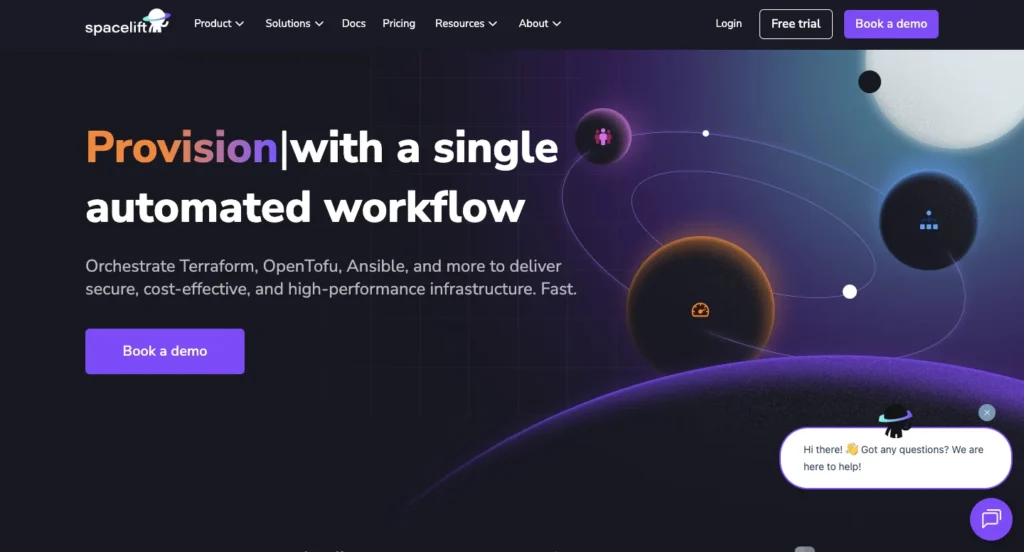
1. Spacelift with Saturnhead AI
What it is:
Spacelift is an Infrastructure as Code (IaC) management platform that helps teams orchestrate Terraform, Pulumi, and CloudFormation.
Their Saturnhead AI assistant takes it further by analyzing your runs, explaining errors in plain English, and even suggesting fixes.
Key AI Features:
- Error diagnosis with human-readable explanations.
- Natural language queries for Terraform state.
- Intelligent policy recommendations.
Real-Life Use Case:
Imagine you’re running a Terraform deployment that keeps failing with a vague “dependency cycle” error. Normally, you’d spend an hour digging through HCL.
With Spacelift Saturnhead, you paste the error, and it explains: “Your S3 bucket depends on IAM policies that depend on the bucket. Swap the order of creation to resolve.” You fix it in minutes instead of hours.
Why it’s great:
For teams drowning in IaC complexity, this feels like a DevOps co-pilot.
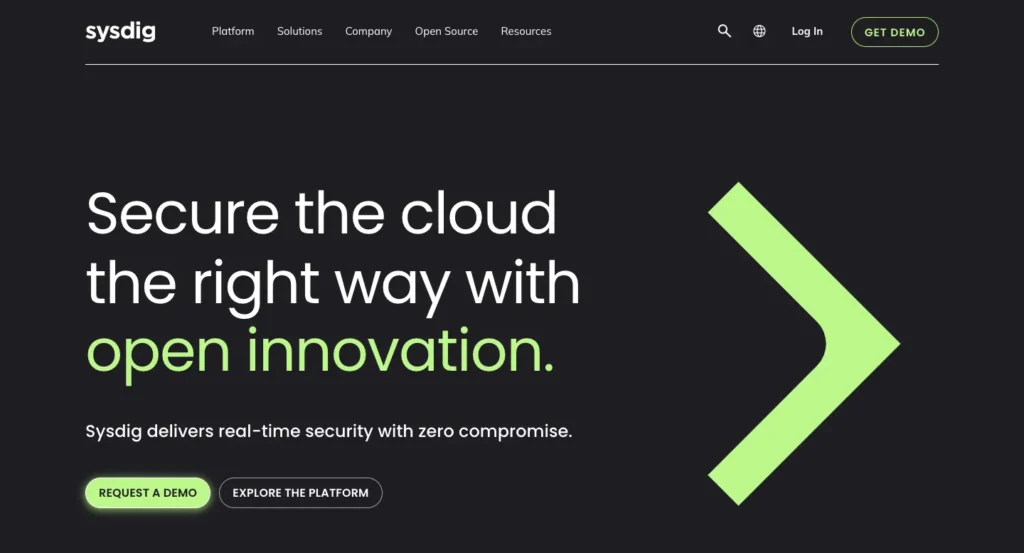
2. Sysdig with AI-powered Threat Detection
What it is:
Sysdig is a container and Kubernetes security platform. Their AI engine monitors runtime behavior and flags anomalies.
Key AI Features:
- AI-driven runtime security detection.
- Anomaly spotting across Kubernetes clusters.
- Cloud-native visibility with policy suggestions.
Real-Life Use Case:
An e-commerce company running Kubernetes sees suspicious traffic spikes. Sysdig AI correlates it with a crypto-mining container running in the background.
Instead of your team piecing logs together after downtime, Sysdig stops the container automatically and alerts you.
Why it’s great:
Security is where humans are slow and hackers are fast. AI levels the playing field.
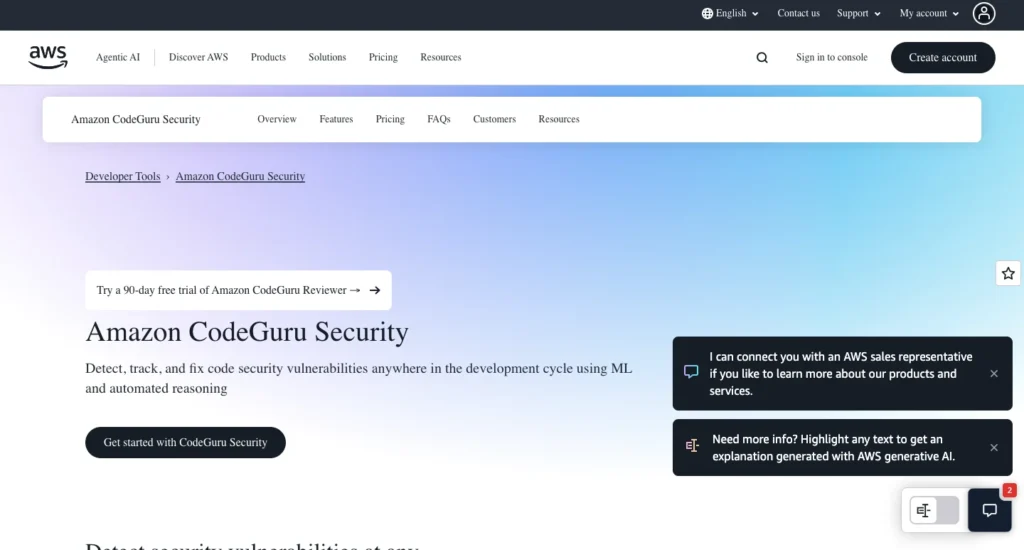
3. AWS CodeGuru
What it is:
An AWS service that uses ML to perform code reviews and application profiling.
Key AI Features:
- Detects hard-to-find issues like concurrency bugs.
- Suggests performance optimizations.
- Integrates directly with GitHub, Bitbucket, and AWS repos.
Real-Life Use Case:
A fintech startup discovers CodeGuru flagging a threading issue in their payment API that could have caused double-charges. Fixing it before deployment saves them both customer trust and legal headaches.
Why it’s great:
It’s like having an experienced reviewer on every PR.
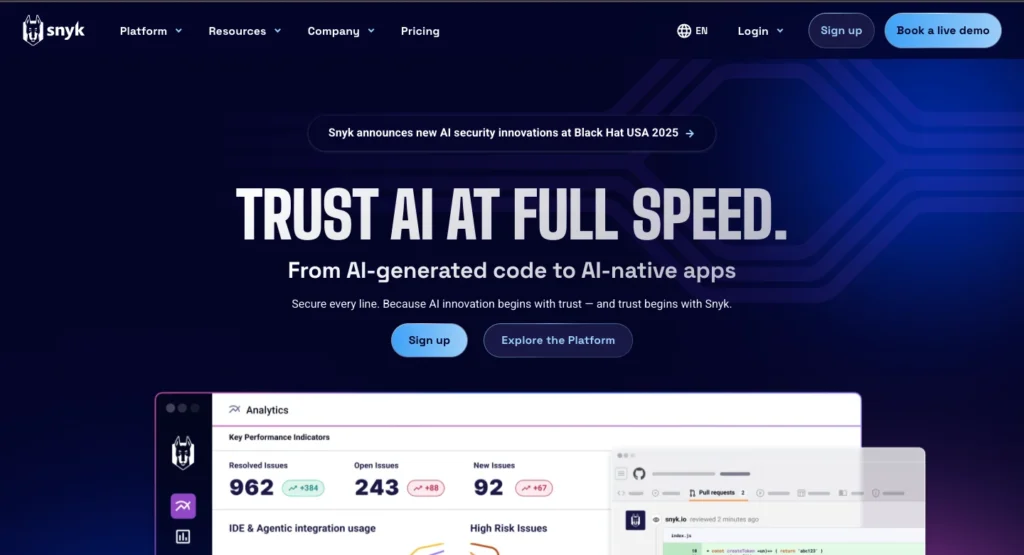
4. Snyk
What it is:
An AI-enhanced developer security tool for scanning dependencies, containers, and IaC.
Key AI Features:
- AI-driven vulnerability prioritization.
- Fix suggestions right inside your IDE.
- Continuous scanning of repos.
Real-Life Use Case:
Your team pushes code with a new Node.js dependency. Within seconds, Snyk flags a critical vulnerability in that version, recommends an upgrade path, and blocks the merge. Instead of learning post-breach, you fix it pre-release.
Why it’s great:
Shifts security left without slowing developers down.
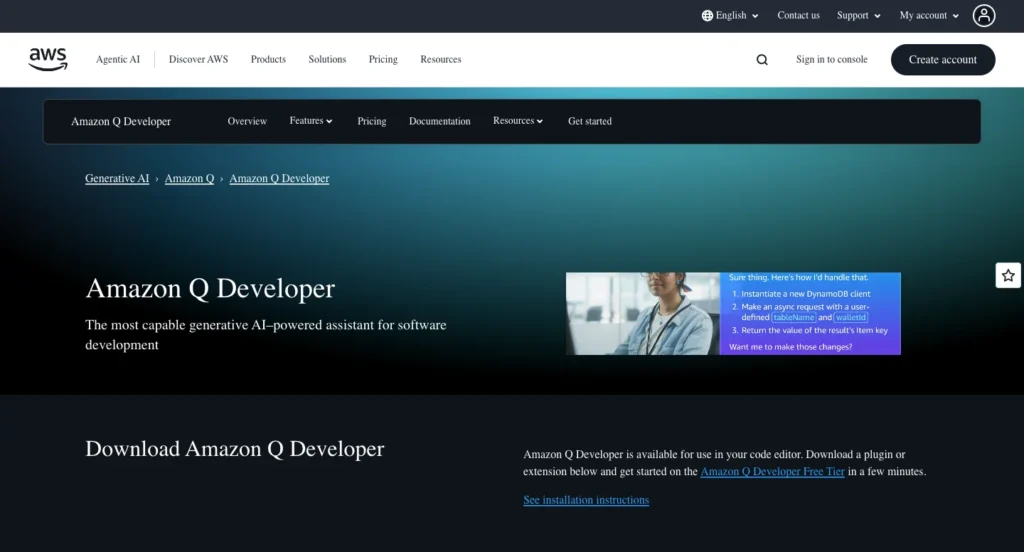
5. Amazon Q Developer
What it is:
Amazon’s new generative AI assistant for developers, integrated into AWS.
Key AI Features:
- Generates Terraform or CloudFormation from plain English prompts.
- Answers “how-to” AWS questions in natural language.
- Provides guided troubleshooting.
Real-Life Use Case:
Instead of Googling “how to write an IAM policy for read-only S3,” you ask Amazon Q. It generates the JSON, explains it, and even suggests guardrails.
Why it’s great:
It’s like ChatGPT, but with AWS-native knowledge and context.
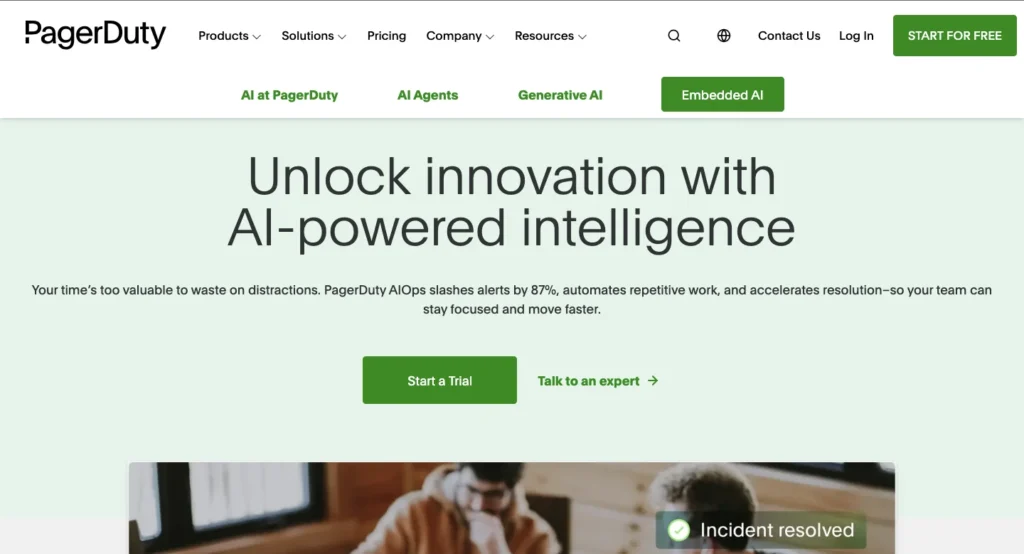
6. PagerDuty AIOps
What it is:
PagerDuty is known for incident management. Their AIOps layer cuts alert noise and predicts outages.
Key AI Features:
- AI-driven alert grouping.
- Predictive incident detection.
- Automated remediation runbooks.
Real-Life Use Case:
During Black Friday, a retail site’s monitoring fires hundreds of alerts. PagerDuty AIOps groups them, pinpoints the root cause (database latency), and even triggers a scaling runbook automatically.
Why it’s great:
Your on-call engineers actually get to sleep.
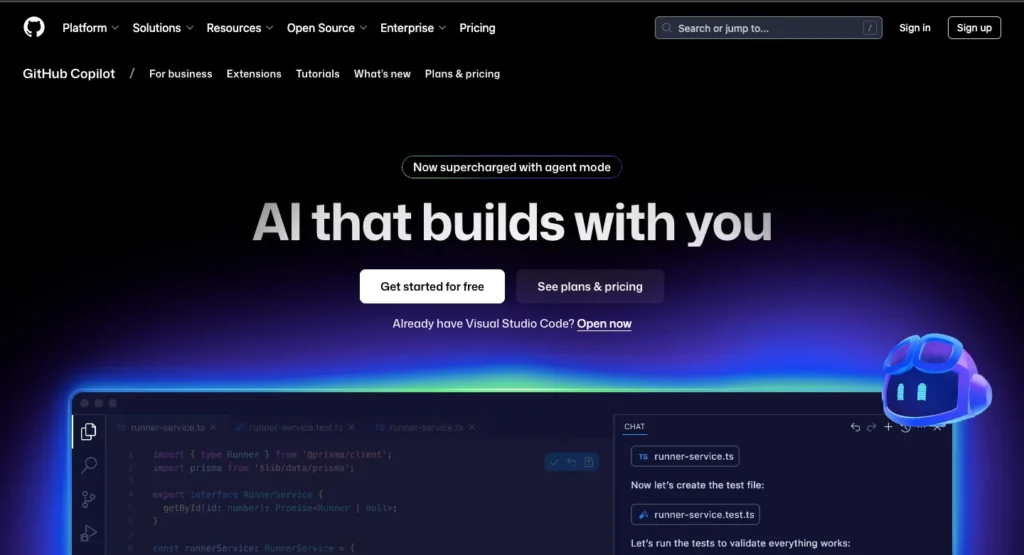
7. GitHub Copilot
What it is:
An AI coding assistant powered by OpenAI Codex.
Key AI Features:
- Autocompletes code in real time.
- Suggests whole functions.
- Generates tests.
Real-Life Use Case:
A DevOps engineer writing Terraform gets a working VPC module scaffolded in seconds. Instead of Googling syntax, they tweak the generated code.
Why it’s great:
Massive productivity boost, especially for boilerplate-heavy DevOps code.
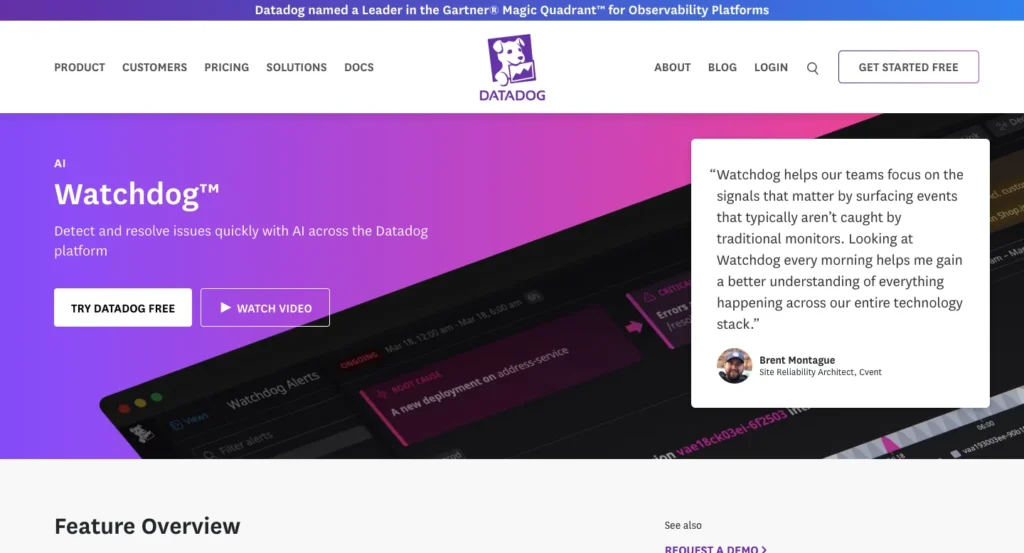
8. Datadog with Watchdog AI
What it is:
Datadog is a monitoring platform. Watchdog AI adds anomaly detection.
Key AI Features:
- Auto-detects performance anomalies.
- Correlates metrics across services.
- Explains anomalies in plain English.
Real-Life Use Case:
Your service is healthy but latency spikes at midnight. Watchdog explains it: “A cron job in Service X is consuming 70% CPU.” Problem solved without war rooms.
Why it’s great:
Cuts mean-time-to-resolution (MTTR) dramatically.

9. Dynatrace with Davis AI
What it is:
An enterprise observability platform with an AI engine called Davis.
Key AI Features:
- Automatic root cause analysis.
- Dependency mapping across microservices.
- Predictive performance insights.
Real-Life Use Case:
A SaaS company experiences random 502 errors. Davis AI traces it to a misconfigured load balancer in seconds. Humans would have taken hours.
Why it’s great:
For enterprises, it’s like having a 24/7 performance detective.
Quick Comparison Table
| Tool | Best For | AI Superpower | Pricing |
|---|---|---|---|
| Spacelift | IaC orchestration | Explains and fixes Terraform errors | Freemium |
| Sysdig | Kubernetes security | Detects runtime anomalies | Paid |
| CodeGuru | Code reviews | Finds concurrency & memory bugs | Usage-based |
| Snyk | Developer security | Prioritizes vulnerabilities | Freemium |
| Amazon Q | AWS productivity | Generates IaC from English | Paid |
| PagerDuty AIOps | Incident response | Groups alerts & auto-remediates | Paid |
| GitHub Copilot | Coding | Autocompletes IaC & tests | Paid |
| Datadog AI | Monitoring | Explains anomalies | Paid |
| Dynatrace AI | Observability | Root cause analysis | Paid Enterprise |
How to Choose the Right AI Tool for Your DevOps Workflow
- If you’re a small team → Start with GitHub Copilot or Snyk to boost productivity and security.
- If you’re scaling fast → Add Spacelift and Datadog to tame infrastructure and monitoring.
- If you’re enterprise-level → PagerDuty AIOps and Dynatrace are must-haves.
Pro tip: Don’t try to adopt all at once. Pick your biggest bottleneck, maybe alert fatigue, maybe IaC errors and solve that first with AI.
Real-Life Impact: Case Study
A SaaS company running on AWS combined PagerDuty AIOps + Datadog Watchdog. Before, their mean-time-to-resolution (MTTR) was 2 hours.
After adopting AI-driven alerts and anomaly detection, MTTR dropped to 20 minutes.
Not only did uptime improve, but burnout went down, engineers weren’t waking up for false alarms anymore. That’s the kind of business and human value AI can bring.
The Future of AI in DevOps
- From reactive to proactive: AI won’t just help you respond, it will prevent failures altogether.
- LLMs in pipelines: Imagine GitHub Copilot auto-writing not just code, but entire CI/CD configs.
- Security-first DevOps: AI catching vulnerabilities as you type.
Conclusion
Here’s the truth, AI won’t replace DevOps engineers, but engineers who use AI will replace those who don’t.
The tools we explored from Spacelift to Dynatrace aren’t just fancy add-ons. They’re becoming the backbone of modern DevOps.
Whether it’s predicting outages, writing better code, or keeping your infrastructure secure, AI is quietly taking away the grunt work so you can focus on impact.
So don’t wait for “someday.” Pick one of these tools, try it in your workflow this week, and see how much easier DevOps can be with AI by your side.
You May Also Like:
- 18 Best Open Source AI Testing Tools in 2025 (Detailed Review + Use Cases)
- 10 Best AI Tools for Product Managers in 2025 | Reviews & Use Cases
- Best AI Note Taking Tools 2025 | Free & Paid Options Reviewed
- Remaker AI Tools Review (2025): Free Face Swap, Headshots & 25+ AI Features
- Z.ai Review 2025: Free AI Tool for Coding, PPTs & API Access

